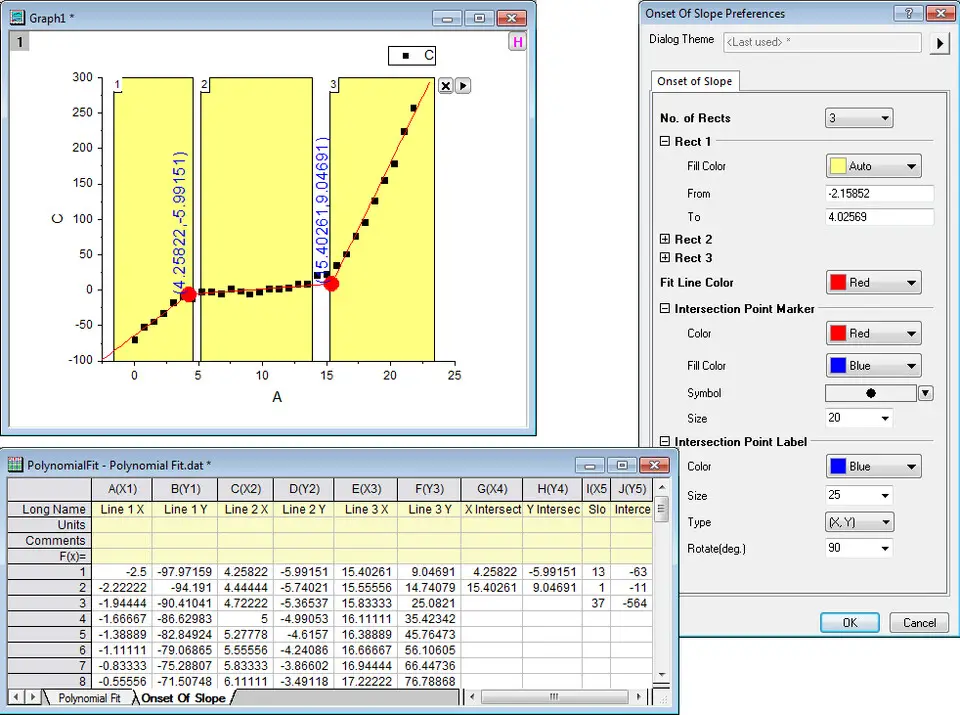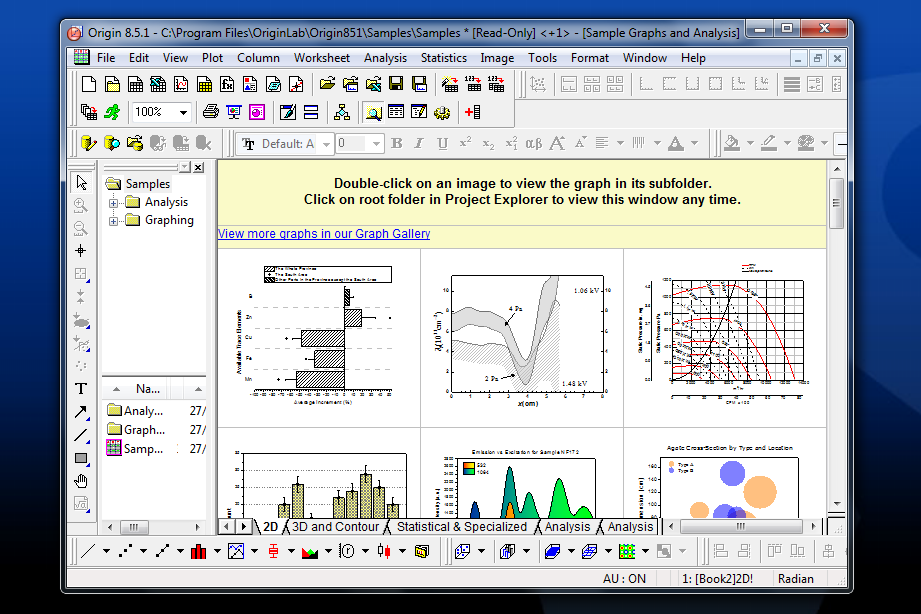

#Origin graphing 9 software
Making Excel users (almost all of us, to at least some extent) feel at home is a long-term aim of most worksheet-based software tools, and Origin is no exception.

This could, of course, have been done in previous versions it could also be done in other ways, but not with so little effort or fuss. A couple of clicks hid the rows which were not required and, in an improvement over the usual spreadsheet approach, asked me whether or not I wanted to include the hidden rows in subsequent analyses. As a practical example, I had a dataset just now in which I had to analyse data only for those respondents who were aged over 18 and had answered ‘yes’ to a particular question. Though there are slight differences in its look and feel, anyone who has used Excel’s column filters will feel right at home with Origin’s implementation.

It jigs in perfectly with Origin’s earlier RoI (region of interest) inspection gadget a couple of releases ago.Īnother of my favourites is the addition of an Excel-like data filter. Being able to flick inspection focus from one plot or group of plots to another, precisely comparing and contrasting x and y coordinates in a tabulated display, is not only a time saver but a valuable tool for expanding exploratory views. Origin calls it a global vertical cursor, since it runs comparisons across linked stacks of graphs panels selected from any disparate data sets the user wishes. One of these, the latest addition to Origin’s repertoire of ‘gadgets’, is a comparative cursor. Putting aside the speed issue, my personal favourite picks were additions which make work flow more smoothly and, therefore, render data exploration and interpretation more transparent. Exactly how much of this is a result of refined 64-bit utilisation and how much is down to default OpenGL graphics for 3D work I can’t say, but the net result is startling and impressive. Replicating some parts of their technique at home it was clear that, even in this untypical mixed role, things ran faster in the new version, even on a slower machine. One complex 3D operation which used to allow me time for a swig of coffee is now complete before I lift my finger from the mouse click which triggered it.ĭuring the period of review, I worked with researchers who were using release 8.6 as part of a workflow pipeline for text analysis. On the most intensively demanding graphing tasks you don’t need a benchmark test to show their speed gain it’s clearly visible as you work.
#Origin graphing 9 update
Origin and OriginPro (hereafter, just ‘Origin’ with indication where something is only available in the Pro version) both went 64-bit in their previous release (8.6) and it was a welcome advance, but this is the update in which the effects really start to show off.


 0 kommentar(er)
0 kommentar(er)
